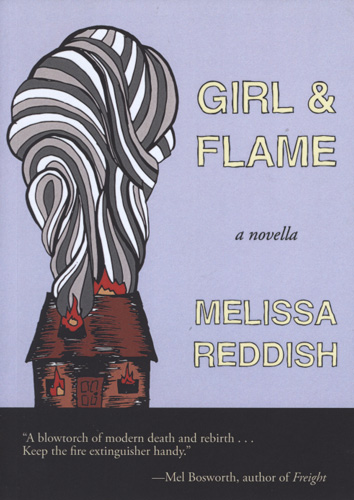Girl & Flame
Over the past couple of years, more than a bit has been written about the re-emergence of the novella as a respected literary form. Given that most of us tend to be caught between a perpetual time crunch and a desire for the aspects of our lives that truly matter, it only makes sense. Shorter works are able to accommodate our constraints while providing that glimmer of the richer experience we seek. All the while, a move toward a relative minimalism has revealed that breadth does not necessarily equate with depth. Sometimes, an author’s choice to refrain from filling in all of the blanks just may allow for a more satisfying experience on the part of the reader.
Over the past couple of years, more than a bit has been written about the re-emergence of the novella as a respected literary form. Given that most of us tend to be caught between a perpetual time crunch and a desire for the aspects of our lives that truly matter, it only makes sense. Shorter works are able to accommodate our constraints while providing that glimmer of the richer experience we seek. All the while, a move toward a relative minimalism has revealed that breadth does not necessarily equate with depth. Sometimes, an author’s choice to refrain from filling in all of the blanks just may allow for a more satisfying experience on the part of the reader.
Within Girl & Flame, Melissa Reddish provides so much more than that satisfying or even astoundingly unique and impactful literary experience. Rather, she renders the intensity of a woman’s journey with a spectrum of ferocious and heartrending imagery that no rambling profession of pain or self-empowerment could come anywhere close to matching. Although Reddish’s words prove quotable, time and time again, there is something near-mystical in the way they all but dissolve, leaving blazing images of grief, anger, surrender and, for lack of a better term, arising in their place.
After The Girl loses all to which she has clung, including her brother, her father, and her lover in a house fire, she finds herself on a journey alongside an ember she discovers lingering in the air. Traveling through the forest to the top of the Empire State building and beyond, together they navigate the taunts of the trees, The Girl’s new job as an office worker for a customizable pet accessories company, a less than satisfying holiday dinner, and apartment search, not to mention the misguided quest for a new lover. In spite of The Girl’s best attempts at crafting the prescribed elements of a functional life, The Ember continues to grow “limp, sickly brownish-gold,” without the proper fuel to feed her fire.
Though I hesitate (and by that, I mean refuse, for it would take a thesis-length review to do Reddish justice) to attribute meaning or offer a literary analysis of her unconventional and uniquely impactful work, I cannot help but to acknowledge the metaphorical aspect of this work that leads me to believe that a strong feminist message lies beneath Reddish’s artistry.
It all begins, early on, as The Girl contrasts the demise of the men in her life with the “diminishment” of her mother.
The three men in my life, their bodies grown round with beer and steak and wine. My mother had disappeared long ago. Hers was a diminishment, a gradual acknowledgement that her space grew smaller and smaller with each breath of my father or brother or lover, until finally, one warm July morning, she exhaled and collapsed into memory. Now, the heat and smoke rise and take the shape of her, phoenix-like. [ . . . ] As my mother became air, my father, brother, and lover remain grounded, their bodies a kind of permanence. Now they are piles of ash and teeth and bone, ready to drift into a plate of spaghetti, to slip through the gears of a pocket watch, to be sucked into my little cousin’s nose right before he sneezes.
Throughout the novella, the misogynistic atrocities of the domestic and professional spheres as well as their impacts upon a woman’s flame are brought to light with a cynicism. This cynicism proves, at times, more than slightly humorous in the midst of sad truths, for, prior to embracing the power to effect change, what is one to do with her experience but laugh?
Yearn to make an even larger, more important sacrifice of your body. Remember more important people that you’ve lost and understand that they have all returned to star-glimmer and do not miss you. Contemplate a greater wreckage of your body, until the roiling ugly mass inside you can be seen. Sit up. Feel the dampness on your neck and shoulders and back through your sweater, an ultra-thin $25.99 from Target that will dissolve by the third wash. Wondering why a clothing company would make such a stupidly thin sweater, and then wonder why you would be dumb enough to buy it. Wonder what other idiotic things have rent your body.
Though, in time, the voice of madness (or a harrowing clarity) may beckon during a time of separation, neither The Girl nor The Ember shows herself as willing to entertain that prospect of diminishment, at least not for more than the span of a moment’s exhaustion. In the end, given their mutually consumptive hunger and newfound ability to not give a fuck, the two engage in a dialogue that not so surreptitiously invites the reader to unearth the courage to burn “as hard and fast” as she can while readying to discover for herself whether The Girl and The Ember are, in fact, destined to reunite.





